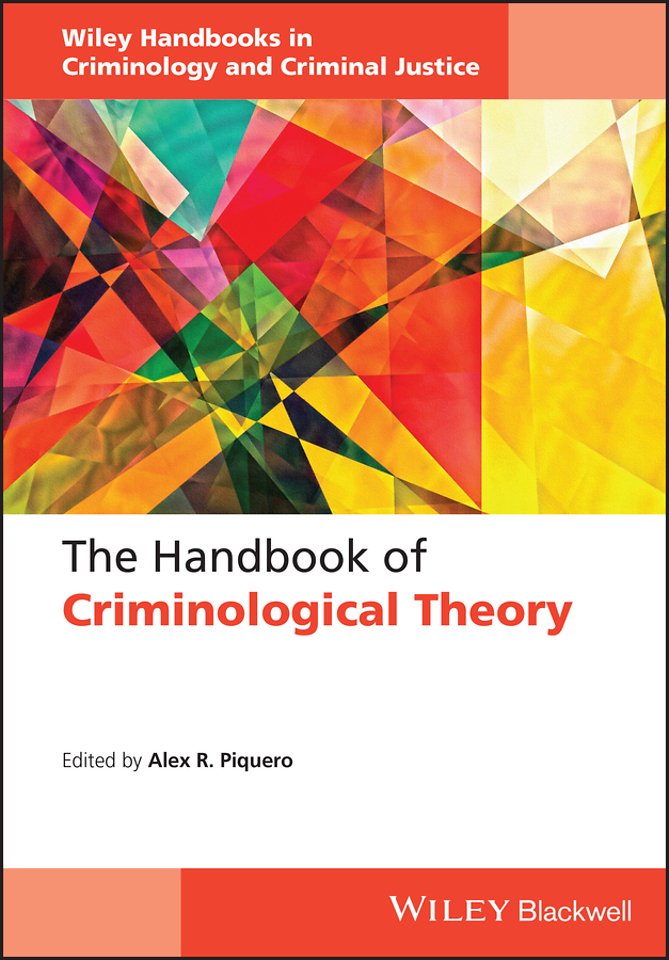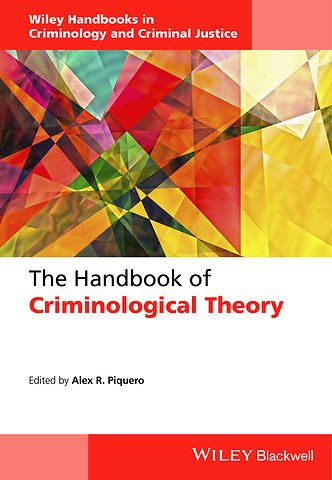The Handbook of Criminological Theory
Samenvatting
An indispensable resource for all levels, this handbook provides up–to–date, in–depth summaries of the most important theories in criminology.
Provides original, cutting–edge, and in–depth summaries of the most important theories in criminology
Covers the origins and assumptions behind each theory, explores current debates and research, points out knowledge gaps, and offers directions for future research
Encompasses theory, research, policy, and practice, with recommendations for further reading at the end of each essay
Features discussions of broad issues and topics related to the field, such as the correlates of crime, testing theory, policy, and prediction
Clearly and accessibly written by leading scholars in the field as well as up–and–coming scholars
Specificaties
Inhoudsopgave
<p>1 Introduction: Theory and Contemporary Criminology 1<br />Charles R. Tittle</p>
<p>2 Correlates of Crime 18<br />Matt DeLisi and Michael G. Vaughn</p>
<p>3 Theory Testing In Criminology 37<br />Travis C. Pratt</p>
<p>4 Deterrence 50<br />Thomas A. Loughran, Ray Paternoster, and Douglas B. Weiss</p>
<p>5 Contemporary Biosocial Criminology: A Systematic Review of the Literature, 2000–2012 75<br />J.C. Barnes, Brian B. Boutwell, and Kevin M. Beaver</p>
<p>6 A Developmental Perspective on Adolescent Risk ]Taking and Criminal Behavior 100<br />Elizabeth Cauffman, Caitlin Cavanagh, Sachiko Donley, and April Gile Thomas</p>
<p>7 Social Disorganization Theory′s Greatest Challenge: Linking Structural Characteristics to Crime in Socially Disorganized Communities 121<br />Charis E. Kubrin and James C. Wo</p>
<p>8 Routine Activities, Delinquency, and Youth Convergences 137<br />Jose R. Agustina and Marcus Felson</p>
<p>9 Environmental Criminology 156<br />Aiden Sidebottom and Richard Wortley</p>
<p>10 Control as an Explanation of Crime and Delinquency 182<br />Chester L. Britt and Michael Rocque</p>
<p>11 Strain, Economic Status, and Crime 209<br />Robert Agnew</p>
<p>12 Social Learning Theory 230<br />Ronald L. Akers and Wesley G. Jennings</p>
<p>13 Cultural Processes, Social Order, and Criminology 241<br />Mark T. Berg, Eric A. Sevell, and Eric A. Stewart</p>
<p>14 Labeling Theory: Past, Present, and Future 271<br />Ruth Triplett and Lindsey Upton</p>
<p>15 Feminist Theory 290<br />Joanne Belknap</p>
<p>16 Critical Criminology 301<br />Martin D. Schwartz and Henry H. Brownstein</p>
<p>17 Integrating Criminological Theories 318<br />Marv Krohn and Jeffrey T. Ward</p>
<p>18 Developmental and Life ]Course Theories of Crime 336<br />Tara Renae McGee and David P. Farrington</p>
<p>19 Biosocial Bases of Antisocial and Criminal Behavior 355<br />Frances R. Chen, Yu Gao, Andrea L. Glenn, Sharon Niv, Jill Portnoy, Robert Schug, Yaling Yang, and Adrian Raine</p>
<p>20 From Theory to Policy and Back Again 380<br />Scott H. Decker</p>
<p>21 How Do Criminologists Interpret Statistical Explanation of Crime? A Review of Quantitative Modeling in Published Studies 395<br />David Weisburd, Breanne Cave, and Alex R. Piquero</p>
<p>22 Situational Theory: The Importance of Interactions and Action Mechanisms in the Explanation of Crime 415<br />Per ]Olof H. Wikstrom and Kyle Treiber</p>
<p>23 Macro ]Level Theory: A Critical Component of Criminological Exploration 445<br />Eric P. Baumer and Ashley N. Arnio</p>
<p>24 What International Research Has Told Us About Criminological Theory 475<br />Olena Antonaccio and Ekaterina V. Botchkovar</p>
<p>25 Qualitative Criminology′s Contributions to Theory 497<br />Andy Hochstetler and Heith Copes</p>
<p>Index 521</p>
Net verschenen
Rubrieken
- aanbestedingsrecht
- aansprakelijkheids- en verzekeringsrecht
- accountancy
- algemeen juridisch
- arbeidsrecht
- bank- en effectenrecht
- bestuursrecht
- bouwrecht
- burgerlijk recht en procesrecht
- europees-internationaal recht
- fiscaal recht
- gezondheidsrecht
- insolventierecht
- intellectuele eigendom en ict-recht
- management
- mens en maatschappij
- milieu- en omgevingsrecht
- notarieel recht
- ondernemingsrecht
- pensioenrecht
- personen- en familierecht
- sociale zekerheidsrecht
- staatsrecht
- strafrecht en criminologie
- vastgoed- en huurrecht
- vreemdelingenrecht

